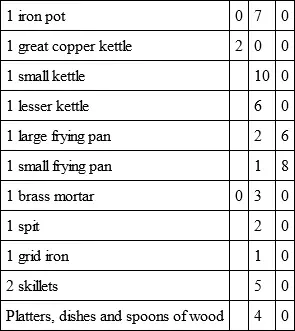George Dow - Every Day Life in the Massachusetts Bay Colony
Здесь есть возможность читать онлайн «George Dow - Every Day Life in the Massachusetts Bay Colony» — ознакомительный отрывок электронной книги совершенно бесплатно, а после прочтения отрывка купить полную версию. В некоторых случаях можно слушать аудио, скачать через торрент в формате fb2 и присутствует краткое содержание. Жанр: foreign_antique, foreign_prose, на английском языке. Описание произведения, (предисловие) а так же отзывы посетителей доступны на портале библиотеки ЛибКат.
- Название:Every Day Life in the Massachusetts Bay Colony
- Автор:
- Жанр:
- Год:неизвестен
- ISBN:нет данных
- Рейтинг книги:3 / 5. Голосов: 1
-
Избранное:Добавить в избранное
- Отзывы:
-
Ваша оценка:
- 60
- 1
- 2
- 3
- 4
- 5
Every Day Life in the Massachusetts Bay Colony: краткое содержание, описание и аннотация
Предлагаем к чтению аннотацию, описание, краткое содержание или предисловие (зависит от того, что написал сам автор книги «Every Day Life in the Massachusetts Bay Colony»). Если вы не нашли необходимую информацию о книге — напишите в комментариях, мы постараемся отыскать её.
Every Day Life in the Massachusetts Bay Colony — читать онлайн ознакомительный отрывок
Ниже представлен текст книги, разбитый по страницам. Система сохранения места последней прочитанной страницы, позволяет с удобством читать онлайн бесплатно книгу «Every Day Life in the Massachusetts Bay Colony», без необходимости каждый раз заново искать на чём Вы остановились. Поставьте закладку, и сможете в любой момент перейти на страницу, на которой закончили чтение.
Интервал:
Закладка:
" Bear is before.
" Oatmeal per day, for 50 men, Gallon 1. and so proportionable for more or fewer.
"Thus you see the ship's provision, is Beef or Porke , Fish , Butter , Cheese , Pease , Pottage , Water gruel , Bisket , and six-shilling Bear .
"For private fresh provision, you may carry with you (in case you, or any of yours should be sick at Sea) Conserves of Roses , Clove-Gilliflowers , Wormwood , Green-Ginger , Burnt-Wine , English Spirits , Prunes to stew, Raisons of the Sun , Currence , Sugar , Nutmeg , Mace , Cinnamon , Pepper and Ginger , White Bisket , or Spanish Rusk , Eggs, Rice, Juice of Lemmons , well put up to cure, or prevent the Scurvy. Small Skillets , Pipkins , Porrengers , and small Frying pans .
"To prevent or take away Sea sickness, Conserve of Wormwood is very proper." 8 8 John Josselyn, Two Voyages to New England , London, 1675.
The settler also must take with him a supply of food to answer his needs on reaching Massachusetts, and it was advised that enough for the space of a year might be required in which case each person should be certain to have in store 8 bushels of meal, 2 bushels pease, 2 bushels oatmeal, 1 gallon brandy, 1 gallon oil and 2 gallons vinegar. Sugar could be had in New England as the Colonial vessels were bringing it from the West Indies in the way of trade, but spices, necessary to the English diet, must be brought from England.
John Josselyn, writing in 1638, listed the following articles as necessary equipment for every family coming to New England, viz.:

Household implements for a family of six persons, viz.:

The above prices are estimated costs in England and the freight on the same would be reckoned at the rate of half a ton per person.
The vessels which carried the great emigration to New England between 1630 and 1640 were of small tonnage and the passenger accommodations on board were limited in space and barren of creature comforts. Small wonder that the health of many of the first settlers, shaken by the passage at sea, paid toll to the severity of the New England climate – the biting cold of the winter and the heat of the summer days to which they were unaccustomed.
"It was not because the Country was unhealthful, but because their bodies were corrupted with sea-diet, which was naught, their Beefe and Porke being tainted, their Butter and Cheese corrupted, their Fish rotten, and voyage long, by reason of crosse Windes, so that winter approaching before they could get warme houses, and the searching sharpnes of that purer Climate, creeping in at the crannies of their crazed bodies, caused death and sickness." 9 9 Wood, New-Englands Prospect , London, 1634.
The ship Talbot , on which Mr. Higginson sailed, brought over one hundred passengers and thirty seamen. She measured nearly eighty-six feet in length and had a depth of hold of eleven feet. By present-day measurement she was about two hundred tons burden. The space between decks, where the passengers slept and spent much time during the dreary voyage, was so low that a tall man could not stand erect, and whenever a severe storm arose, so that the ports and hatches must be kept closed, the air below deck in time must have become intolerable. Such a storm arose when the Talbot was thirty-three days out and "ye wind blew mightily, ye sea roared and ye waves tossed us horribly; besides it was fearfull darke and ye mariners made us afraid with their running here and there and lowd crying one to another to pull at this and yt rope."
These small emigrant ships of the seventeenth century, besides men, women and children, brought over much livestock housed in temporary pens and shelters built amidships. The long boat or pinnace was also carried on board, all of which left little room for movement about the deck. But these three hundred tons ships were traveling palaces when compared with some of the smaller craft that boldly ventured across the Atlantic. Barks, ketches, pinks and other small vessels of less than fifty tons burden were common. In 1635, a "small Norsey bark" of twenty-five tons reached Boston. She was bound for Connecticut, but a stormy voyage had forced her to seek safety in Boston harbor. This vessel, little over thirty feet in length, brought over fourteen passengers, including two women, with their household goods.
CHAPTER II
Their Early Shelters and Later Dwellings
There is a widespread misconception that the colonists on reaching Massachusetts proceeded immediately to build log houses in which to live. Historians have described these log houses as chinked with moss and clay and as having earth floors, precisely the type of house built on the frontier and in the logging camps at a much later period. A well-known picture of Leyden Street, at Plymouth, shows a double row of log houses reaching up the hillside, which the Pilgrims are supposed to have constructed. In point of fact, no contemporary evidence has been found that supports the present-day theory. The early accounts of what took place in the days following the settlement along the coast are full of interesting details relating to day-by-day happenings but nowhere do we find allusion to a log house such as modern historians assume existed at that time. This unique form of construction, however, had been used in Scandinavia since the Middle Ages and also in parts of Germany, but never did it appear in England. It also is well established that the North American Indians knew nothing of this method of construction, even the Iroquois tribe who built a "long house," so-called.
The Swedes and Finns who settled in Delaware in 1638 introduced the log house built of logs with notched ends, with which they were familiar in their homeland. What more natural? Jasper Dankers and Peter Sluyter, Dutch travelers, made a tour of the American colonies in 1679-1680, and while passing through New Jersey, describe the house of Jacob Hendricks, near the town of Burlington, as follows:
"The house, although not much larger than where we were the last night, was somewhat better and tighter, being made according to the Swedish mode, and as they usually build their houses here, which are block-houses, being nothing less than entire trees, split through the middle, or squared out of the rough, and placed in the form of a square, upon each other, as high as they wish to have the house; the ends of these timbers are let into each other, about a foot from the ends, half of one into half of the other, the whole structure is thus made without a nail or a spike. The ceiling and roof do not exhibit much finer work, except amongst the most careful people, who have the ceiling planked and a glass window. The doors are wide enough, but very low, so that you have to stoop in entering. These houses are quite tight and warm: but the chimney is placed in a corner. My comrade and myself had some deer skins, spread upon the floor to lie on, and we were, therefore, quite well off and could get some rest." 10 10 Memoirs of the Long Island Historical Society , Vol. I.
These travelers also spent a night at a Quaker's house near where a gristmill had been erected on a creek above the falls at what is now Trenton.
Читать дальшеИнтервал:
Закладка:
Похожие книги на «Every Day Life in the Massachusetts Bay Colony»
Представляем Вашему вниманию похожие книги на «Every Day Life in the Massachusetts Bay Colony» списком для выбора. Мы отобрали схожую по названию и смыслу литературу в надежде предоставить читателям больше вариантов отыскать новые, интересные, ещё непрочитанные произведения.
Обсуждение, отзывы о книге «Every Day Life in the Massachusetts Bay Colony» и просто собственные мнения читателей. Оставьте ваши комментарии, напишите, что Вы думаете о произведении, его смысле или главных героях. Укажите что конкретно понравилось, а что нет, и почему Вы так считаете.












